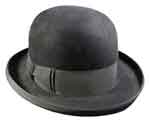 These bygone views refer to historical scenes and perspectives from the past in the townships of Denton and Haughton in Lancashire, situated about six miles east-south-east of Manchester.
They consist of old photographs, engravings, and descriptions of places as they used to be.
At the outset of the 19th century Denton and Haughton were still small farming villages centred on the ancient church of St Lawrence (formerly St James) in Denton and
two halls of the landed gentry, Denton Hall and Haughton Hall. As the Industrial Revolution progressed all this changed when hat manufacture and coal mining became important industries in the two townships.
These pages contain bygone views of the townships dating from the early 20th century up to the 1970s.
These bygone views refer to historical scenes and perspectives from the past in the townships of Denton and Haughton in Lancashire, situated about six miles east-south-east of Manchester.
They consist of old photographs, engravings, and descriptions of places as they used to be.
At the outset of the 19th century Denton and Haughton were still small farming villages centred on the ancient church of St Lawrence (formerly St James) in Denton and
two halls of the landed gentry, Denton Hall and Haughton Hall. As the Industrial Revolution progressed all this changed when hat manufacture and coal mining became important industries in the two townships.
These pages contain bygone views of the townships dating from the early 20th century up to the 1970s.
The Hatting Industry
Eventually, hat manufacture became the most prominent industry in Denton and Haughton.
By 1902 the two townshipe had become the largest hatting centre in Britain with 41 companies, including auxiliery companies, while Stockport was the next largest centre with 16 companies.
History of the Bowler Hat
The bowler hat is a hard felt hat that was developed in 1849 by William and Thomas Bowler for Lock & Co (founded in 1676) of St James’s St, London.
The original hat was created at the works of their family business at Southwark, London.
Lock & Co had been commissioned on the 25 Aug 1849 by their client, Edward Coke* the younger brother of Thomas William Coke (1822-1909), 2nd Earl of Leicester of Holkham Hall, Norfolk,
to design a close-fitting, low-crowned hat with a narrow brim to protect gamekeepers from low-hanging branches while on horseback.

The bowler hat is also known as a Coke hat, billycock, derby (USA), bombín (Spain) and bob hat. The name 'Coke hat' is after Edward Coke for whom the hat was designed and 'billycock' is after the 2nd Earl of Leicester, Thomas William Coke.
William Bowler was born at Haughton, Denton, on the 25 Jan 1808 to William Bowler Sr and Esther Catlow who were married at Manchester Cathedral in 1798. He was baptised at St Lawrence’s Church, Denton, on the 20 Mar 1808. William Bowler Sr was employed as a felt maker and hatter.
Thomas Bowler was born at Haughton, Denton, on the 17 Sep 1826 to Nancy Bowler and he was baptised at St Lawrence’s Church, Denton, on the 10 Dec 1826. William Bowler was the uncle of his business partner, Thomas Bowler, because his father, William Bowler Sr, and Nancy Bowler were brother and sister.
Esther Bowler née Catlow died in early 1860 after which William Bowler returned to Denton where he married Mary Hulme at St Michael’s Church, Ashton-under-Lyne, on the 10 Sep 1860. In 1861 he was resident on Town Ln, Denton, with his wife, Mary, and son, Thomas (b. at Southwark, London, in 1846). By 1871 he was resident on Peel St, Denton, with his wife and grandson (b. at Bermondsey, London, in 1867). Later the family moved to West St, off Oldham St, Denton, where he died on the 9 Feb 1878, aged 70 years.
Thomas Bowler remained in London running the family business and by 1881 he was resident at Camberwell employing 65 men, 60 women and 14 boys. By 1891 he was resident at Highbury New Park, Islington, with his wife, Elizabeth Park (married at Lambeth in 1848), and six of their children. He served as Upper Warden of the Worshipful Company of Feltmakers of the City of London and was due to become Master when he died of jaundice during a holiday in Guernsey on 5 Sep 1893, aged 67 years. The family business on Southwark Bridge Rd, Southwark, continued after his death and by 1939 it had a work force of 600. In 1940 the hat works was destroyed by two consecutive air raids during the blitz. The business then moved to Great Marlborough St, London, where it was in business manufacturing ladies’ hats until 1962.
An earlier reference to the Bowler family business connecting Haughton and Southwark was published in the London Gazette on the 21 May 1816. This mentions George Bowler the Elder, George Bowler the Younger and Robert Armstrong of Haughton and of Worcester St, Southwark, hat manufacturers, dealers, chapmen and co-partners, carrying on trade at Haughton under the firm of Bowler, Son, and Company and in the Borough of Southwark, under the firm of Robert Armstrong and Company.